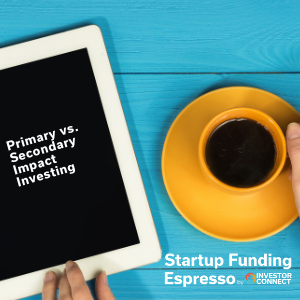

Startup Boards — Primary vs. Secondary Impact Investing Hello, this is Hall T. Martin with the Startup Funding Espresso — your daily shot of startup funding and investing. In impact investing, there is primary impact and secondary impact. Primary impact comes from the company pursuing its mission. You measure it based on the effect the business has on the cause it supports. For example, how many students improved their scores. Secondary impact measures how the company carries out its mission. Certified “B” Corporations are an example of this. For a company to qualify as a “B” Corporation, it must achieve metrics in green practices, diversity, pay, and more. These companies often use secondary impact data to show their performance in environmental activities or community activities. It is often manipulated data that hides the true mission of the company. Focus on the primary impact and check the metrics for companies you want to fund for their impact on the cause. Thank you for joining us for the Startup Funding Espresso where we help startups and investors connect for funding.Let’s go startup something today. ___________________________________ For more episodes from Investor Connect, please visit the site at: Check out our other podcasts here: For Investors check out: For Startups check out: For eGuides check out: For upcoming Events, check out For Feedback please contact info@tencapital.group Please , share, and leave a review. Music courtesy of .
Copyright (c) 2025, Hall Martin and investorconnect.org. All rights reserved.
Disclaimer:
Hall T Martin is the director of Investor Connect, which is a 501(c)(3) nonprofit dedicated to the education of investors for early-stage funding. All opinions expressed by Hall and podcast guests are solely their own opinions and do not reflect the opinion of Investor Connect. This podcast is for informational purposes only and should not be relied upon for the basis of investment decisions.











